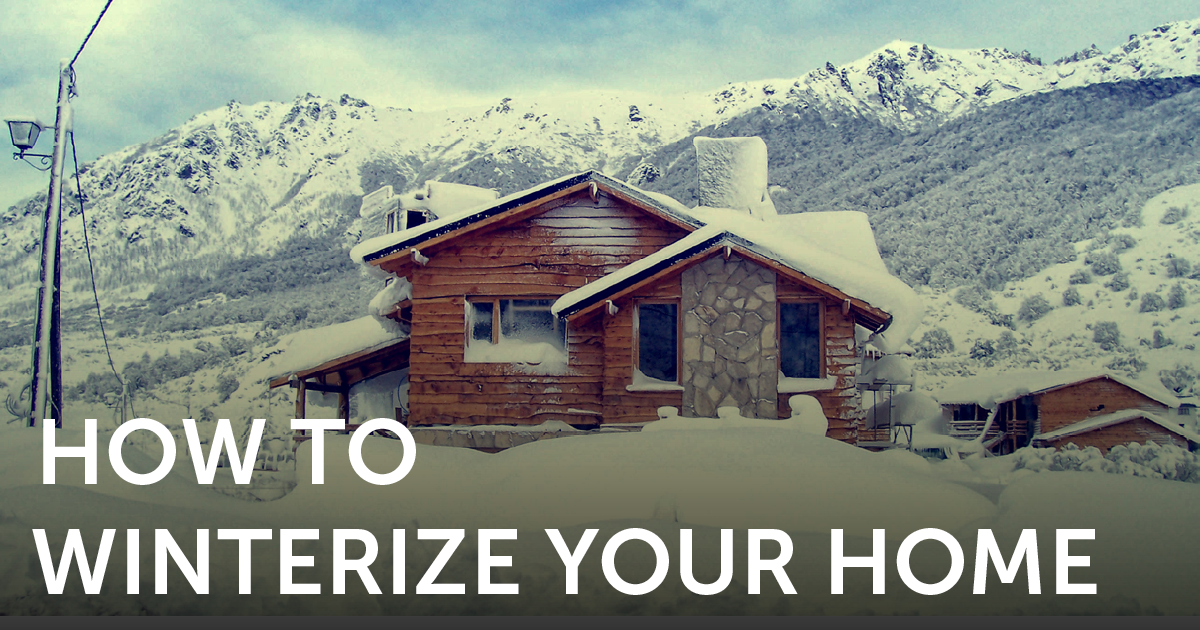 Did you know that if you winterize your home, you could save yourself very expensive repairs or replacements? American Heritage Insurance Group wants to help our customers prepare for the upcoming winter season. We know there is talk about the El Nino being in our area which may mean less precipitation, but the temperatures could drop very low.
Did you know that if you winterize your home, you could save yourself very expensive repairs or replacements? American Heritage Insurance Group wants to help our customers prepare for the upcoming winter season. We know there is talk about the El Nino being in our area which may mean less precipitation, but the temperatures could drop very low.
Read our tips to make sure you have properly winterized your home.
Outdoors
Patio Furniture
- Clean: Mix warm water with car wash soap. Scrub your furniture with a soft brush, rinse with water and let air-dry.
- Derust: Rub off any rust with a scouring pad to stop it from ruining the rest of the furniture.
- Wash: Cushions and fabrics should be machine-washed or hand-washed in a large basic with dishwashing soap and warm water. Let them dry fully to avoid rot or mold.
- Store: Wood furniture made from teak or cherry can be stored outside while pine or cedar must be brought indoors or covered. If your furniture is aluminum, if it is heavyweight, it can be left outside while lightweight/hollow versions should be brought indoors because they can crack and freeze. Any plastic or wicker furniture should be brought indoors.
- Cover: Anything that’s staying outside needs to be covered in a fabric made of a Gore-Tex-like fabric to keep the moisture out while allowing moisture that’s in to escape. Attach covers tightly so water can’t pool and freeze.
Landscaping
- Turn Off Water: Find the indoor water shutoff for all outside lines and turn it off. Turn on the spigots and empty them and hoses. Store hoses indoors.
- Mulch and Clean Yard: Clear any sticks and leaves, pull up dead plants and rake the soil. Then mulch to make the flower bed look nice and to prevent pests from living in the debris. You can even prune your perennials and flowering plants to help with the cosmetic landscaping look.
Gutters
- Clean: Take a plastic bucket with you and use a ladder to reach your gutters. Use gloves to remove debris so it doesn’t damage it or freeze. You can also consider installing gutter guards or mesh covers to use year round.
- Check for Moss: When cleaning your gutters, check for moss and algae growth. It can do permanent damage to a roof and areas below. If you see any, take a spray bottle filled with 5 parts water, 1 part bleach and a tablespoon of trisodium phosphate).
Chimney
- Seal: Check your chimney seal every year and replace it every 5 to prevent water leaks that can damage your chimney structure.
Inside
Heating
- Program Thermostats: Set the thermostat to click on every time the daytime temperature drops below a certain temperature. It’s cheaper to maintain a temperature than to keep turning the thermostat up and down. If you don’t have a programmable thermostat, replace it. They’re fairly easy to install and cost anywhere from about $35.00 – $250.00. If you only turn it up when you are home, it could save you around 30% on your heating bill.
- Replace Filters: Change the filters in your furnace and if you have a forced-air system. Dirty filters can waste energy and cost you from 10 – 30% more in heating costs.
- Clear the Path: Make sure no furniture or other objects are within 3 feet of space heaters or radiators. It not only blocks the heat but it is also a fire hazard.
- Insulate: If you have a forced-air heating system and have ducts running through unheated parts of your home (i.e. garage and attic), measure them and apply pre-cut insulation to wrap around them. It can save you around 10% on your heating bill.
Weatherization
- Caulk and Foam: Test any openings in your home for drafts. Seal the gaps with latex window caulk (it can be removed in the spring with a razor blade). Plug door bottoms with stick on weatherstripping. It can save you anywhere from $100 – $300 on your heating bill.
- Insulate Water Pipes: Look for un-insulated water heating pipes running along walls or ceiling. Purchase some polystyrene insulation (it slips over the pipe). It keeps the heat in the pipes longer leading to less work for your hot water heater. It can save you about $50.
- Insulate the Water Heater: Your heater should have a “blanket.” If it doesn’t take a picture, measure the length and diameter and head to the store. It’s a smart investment that will keep heat in and your hot water heater won’t have to turn on as frequently. It can save you about $100.
- Block Dormant Fireplaces: Block it off so warm air can’t escape. You can use cardboard and expanding foam to seal it. To hide it, you can use a fireplace screen in front of it.
How To Winterize Your Home Tips were provided from Women’s Day.
Leave a Reply
You must be logged in to post a comment.